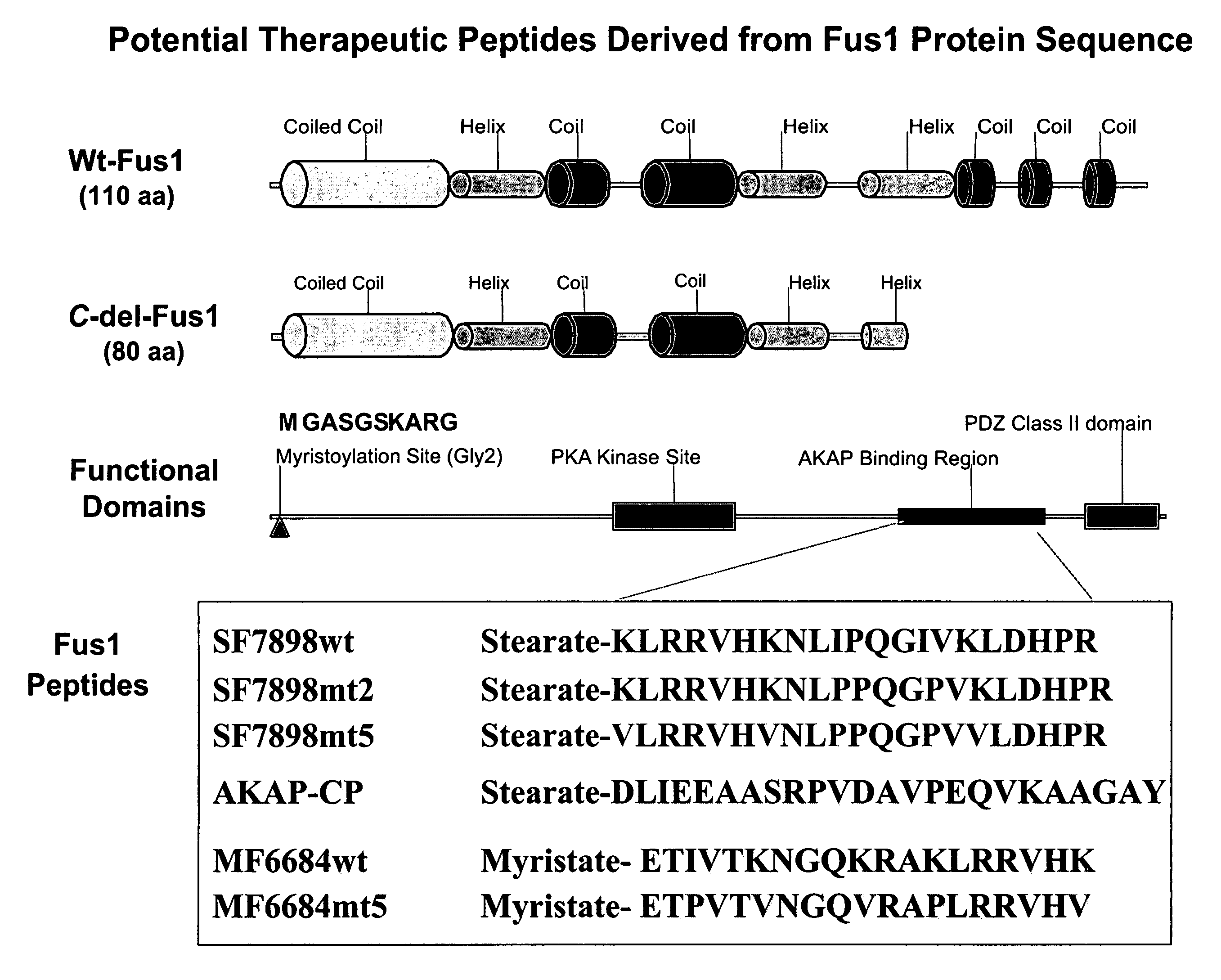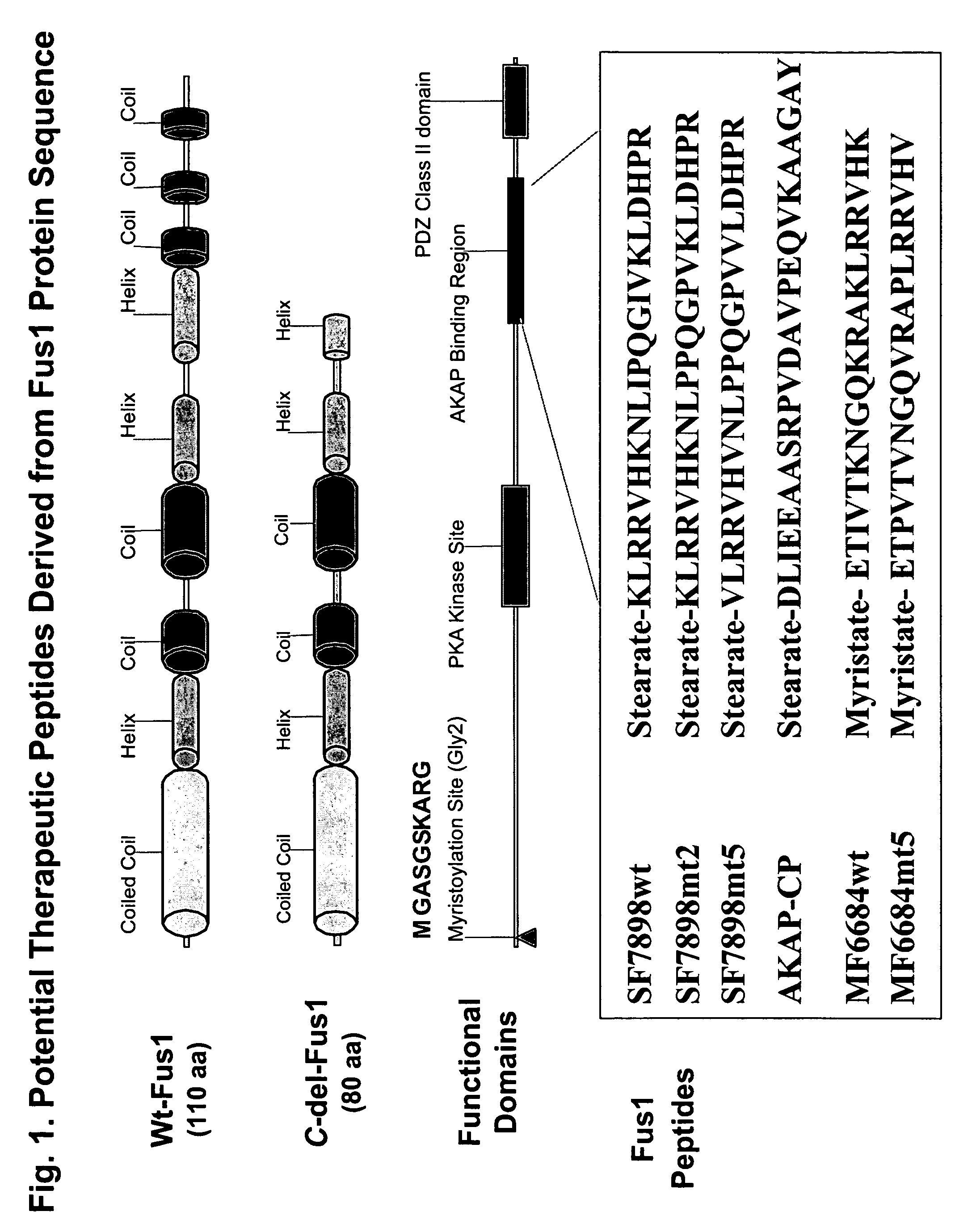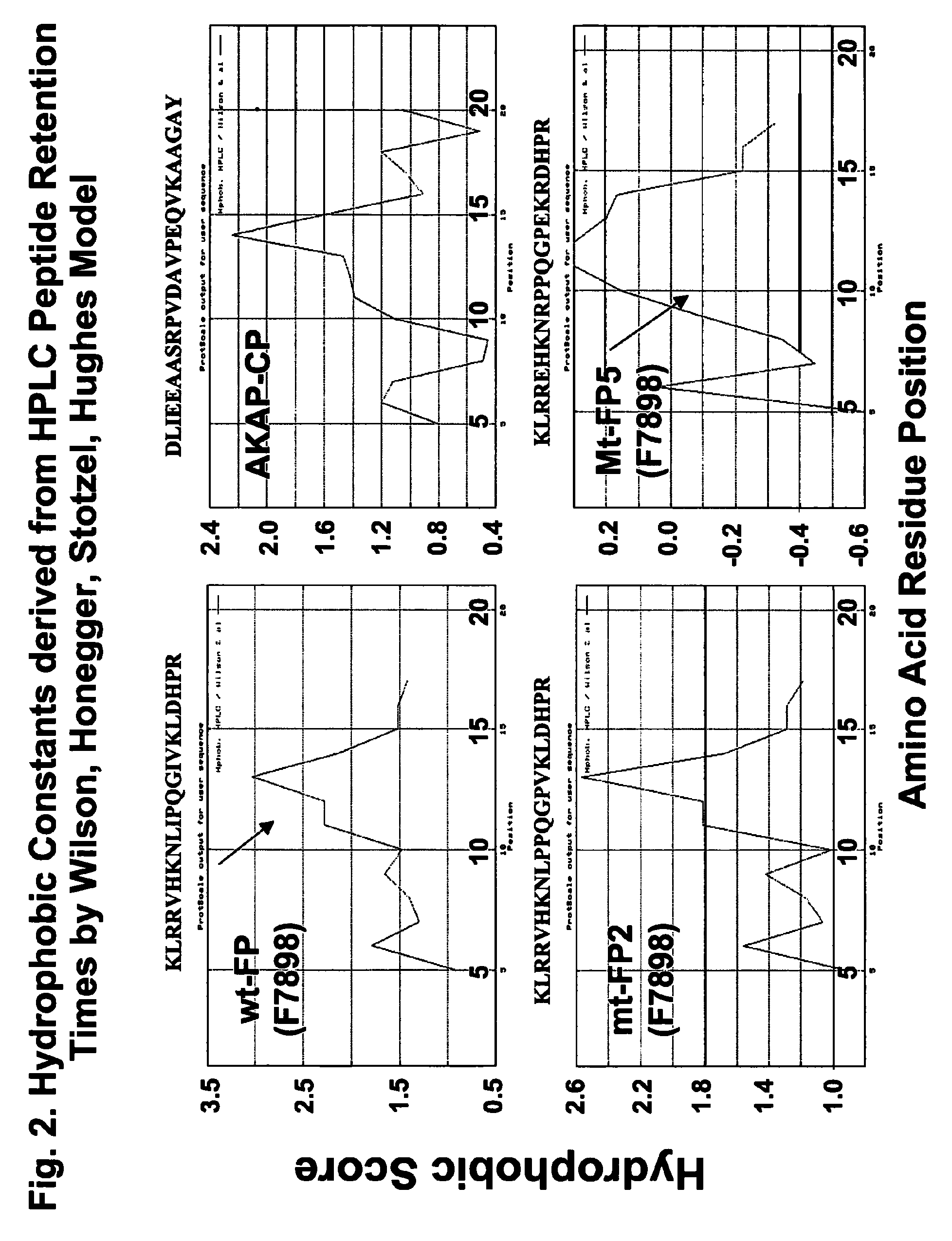Bioactive FUS1 peptides and nanoparticle-polypeptide complexes
a technology of fus1 and polypeptides, applied in the field of molecular biology and cancer therapies, can solve the problems of abnormal cellular proliferation, dna repair enzymes impair the ability of the cell to repair damage, and difficult to achieve efficient introduction of polypeptides into cells, etc., to achieve the effect of facilitating cellular uptake of peptides
- Summary
- Abstract
- Description
- Claims
- Application Information
AI Technical Summary
Benefits of technology
Problems solved by technology
Method used
Image
Examples
example 1
[0247]FUS1 is a novel tumor suppressor gene (TSG) identified in the human chromosome 3p21.3 region that is frequently altered or deleted in many human cancers and has been shown to function as a key mediator in the Apaf1-associated apoptotic pathway, and is a potent tumor suppressor in vitro and in vivo. Loss of expression and deficiency of posttranslational modification of FUS1 protein have been found in a majority of NSCLCs and in almost all SCLCs. Restoration of wt-FUS1 function in 3p21.3-deficient human lung cancer cells by adenoviral vector- or DOTAP:cholesterol nanoparticle-mediated gene transfer inhibits the growth of these tumor cells by induction of apoptosis and alteration of cell kinetics in vitro and in vivo. In this study, the inventors used a computer-assisted structural analysis of Fus1 protein and found several potential PKC activating / interacting sites and an A kinase anchoring protein (AKAP)-interacting motif in the Fus1 protein sequence. Based on these functional ...
example 2
[0285]FUS1 is a tumor suppressor gene involved in lung cancer. The inventors have found that a Fus1 peptide inhibits the c-Abl tyrosine kinase in vitro. Of interest, the inhibitory sequence was derived from a region that was deleted in one of the mutant Fus1 proteins detected in some lung cancer cell lines. Importantly, a stearic acid modified form of this peptide was required for the inhibition. This stearic acid-fus1 peptide also inhibited foci formation in fibroblasts oncogenically transformed by the activated c-Abl protein. These findings suggest that one of the activities of the Fus1 tumor suppressor protein is to interfere with c-Abl tyrosine kinase function.
[0286]Frequent loss of one allele of chromosome arm 3p in both small cell lung cancer (SCLC) and non-small cell lung cancer (NSCLC) provides strong evidence for the existence of tumor suppressor genes (TSGs) in this chromosome region. One of these candidate TSGs, FUS1, did not show homology with any known genes. It was fou...
example 3
[0297]Synergistic Inhibition of EGFR Tyrosine Kinase Activity and NSCLC Cell Growth by Combination Treatment with FUS1-Nanoparticle and Gefitinib
[0298]New cancer treatments designed to restore functions of defect genes and gene products in tumor suppressing and apoptotic pathways by gene transfer and to target at the specific and frequently occurring molecular alterations in key signaling pathways by “smart drugs” such as protein tyrosine kinase inhibitors (PTKIs) are fundamentally changing cancer therapy and holding a promise for lung cancer treatment. FUS1 is a novel tumor suppressor gene (TSG) identified in the human chromosome 3p21.3 region that is frequently altered or deleted in many human cancers and has been shown to function as a key mediator in Apaf1-associated apoptotic pathway and as a potent tumor suppressor in vitro and in vivo. In light of our recent observations on the FUS 1-mediated PTK inhibition and the direct interactions of FUS1 with PTK and Apaf1 proteins toget...
PUM
| Property | Measurement | Unit |
|---|---|---|
| diameter | aaaaa | aaaaa |
| diameter | aaaaa | aaaaa |
| diameter | aaaaa | aaaaa |
Abstract
Description
Claims
Application Information
 Login to View More
Login to View More - R&D
- Intellectual Property
- Life Sciences
- Materials
- Tech Scout
- Unparalleled Data Quality
- Higher Quality Content
- 60% Fewer Hallucinations
Browse by: Latest US Patents, China's latest patents, Technical Efficacy Thesaurus, Application Domain, Technology Topic, Popular Technical Reports.
© 2025 PatSnap. All rights reserved.Legal|Privacy policy|Modern Slavery Act Transparency Statement|Sitemap|About US| Contact US: help@patsnap.com



